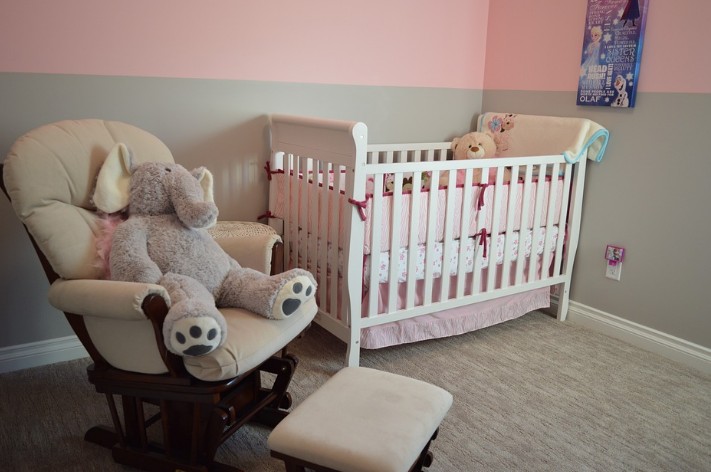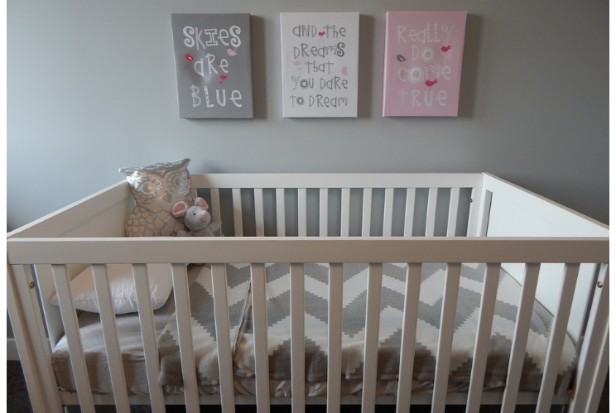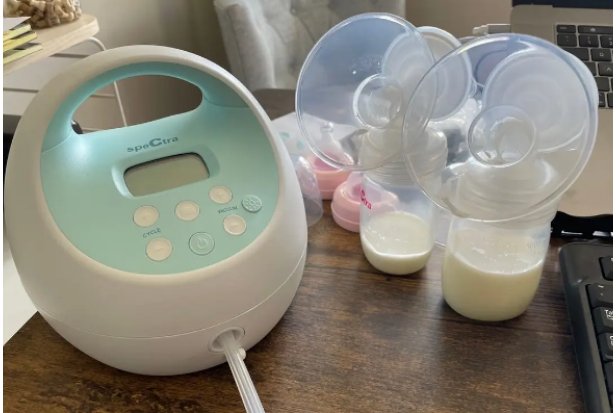We will provide some advice for illuminating the nursery in this article. The importance of sleep for your child and making sure they can fall asleep on their own.
It can be challenging to comprehend why your baby is having trouble falling asleep at times. Parents frequently make the error of not making the baby’s room sufficiently dark. A brain response that signals the baby to wake up can be brought on by the light.
How to Make Your Baby’s Nursery Dark
Seek for Potential Light Sources
Look around the nursery for any hidden lighting that you might have missed. Go into your child’s room, shut the door after you, and wait until your eyes have adjusted before performing a thorough inspection. Take a look around to see if the sun is peeking through the blinds. Does the baby have access to a digital clock that emits soft light that might keep them awake?
Stick Black Paper Or Foil on the Windows
You could always think about taping black paper to the windows if you are truly at a loss for ideas. The task can be completed with simply plain black paper. The paper must be taped to the window, which may leave unsightly glue stains when it is removed. Black foil that is thin is another choice. Due to the static nature of the foil and some of it, some of it will adhere to the window without the use of any adhesive. Simply cut the foil to the appropriate size and shape in this situation, press it against the window, and you’re done!
Additional Tips
Hang a heavy blanket over it if the extra light is coming from the curtains. Make sure there are no openings for light to enter if you have blinds. You can tape cardboard over the blind panes to block out any extra light in order to minimize these gaps. Are you prone to leaving the hallway light on at night? Even the tiniest light strings that are visible on the sides or under the door can keep your child up at night. Make turning it off a new habit!
How Does Light Impact Sleep?
Light and darkness play a role in regulating our sleep patterns. The hormones cortisol and melatonin are released as a result of chemical changes brought on by light cues. The hormone melatonin, which aids in the body’s preparation for sleep and maintenance of a state of sleep, is released as the amount of light in our environment decreases. Contrarily, cortisol, which is released when we are exposed to light, aids in getting the body ready to become alert and active. As you’re getting ready for bed, exposure to light from electronics especially can be upsetting.

Window Covering Options
The National Sleep Foundation advises getting enough bright light during the day and keeping your bedroom dark to sleep. It’s also advised to limit your exposure to electronics and light before bed and to stay away from light the entire night.
Since babies and young children are particularly sensitive to light cues, it can be helpful to consider their sleeping environment to ensure a restful night’s sleep. It’s crucial to take other sources into account, such as street lights, electronics like monitors, and night lights, in addition to reducing the amount of sunlight in your child’s room.
There are many items available on the market to block out outside sources of light. Prices, ease of installation, sturdiness, toxicity, and effectiveness all differ greatly between them. Popular options include:
- Cordless black out shades;
- Shutters;
- Heavy curtains or curtains lined with black out material;
- Dark paper or bristol board;
- Dark towels
Sleep Science
A mature circadian rhythm is not present at birth in infants. For the purposes of this post, circadian rhythm is a fancy way of saying sleep-wake cycles, but it affects many different bodily functions.
Your newborn’s circadian rhythm starts to develop around two months of age, and at that point, they are old enough to distinguish between the days and the nights. The first few hours of the night, babies can start sleeping for a period of 4-6 hours. Your newborn might have looked like a rock star before this. Cue the song “Sleep all day, stay up all night!”
Additionally, it takes newborns 9 to 12 weeks to start fully producing the melatonin sleep-inducing hormone. The pineal gland reaches its adult stage around this time, and under the right conditions, melatonin production rises.
The amount of light that reaches the eye determines how much melatonin is produced by the body to regulate the sleep/wake cycles. Melatonin production is slowed down by light. As a result, during the day and in brighter environments, babies and toddlers produce lower levels.
Potential Sleep Challenges from Sleeping in a Bright Room
Some babies can sleep in a bright room, but many children experience the following side effects if the baby’s room is brighter:
- Naps: your baby/toddler may snooze beautifully at night (or not!), but have difficulty napping. If your child’s room is bright it can be difficult for your baby to fall and stay asleep during the day
- Bedtime & Overnight: if your child’s room has sunlight, white, blue, purple, pink or white light, it may affect your child’s ability to fall and stay asleep, day or night
- Morning: if it is bright, many children wake up with the sun. The sun says “good morning sleepy head – time to start the day” even if it is 5:30 am! When I was younger, I can recall that this was the exact reason I was unable to settle after awakening. My poor parents.
- Summer: with the sun staying up longer, many children have a difficult time settling to sleep until way past their bedtime if their room is light during the summer months
- Daylight Savings Time: your child may have a harder time settling to sleep or waking up early when we change the clocks in the spring and fall.
FAQs
What Kind of Curtains for Nursery
Typically, curtains narrow your windows, covering a sizable portion of glass even when drawn back. If you intend to use curtains, purchase drapes with wide panels and install the hardware for the rod farther from the edge of the window. This will give enough space for the curtains to be fully drawn back without obstructing the view.
For safety’s sake, please make sure your curtain rod is long enough to accommodate the wider opening. Overstretched curtain rods become unstable and may break.
How to Make Your Room Dark Without Curtains
Install blackout blinds that are mounted to your windows. Blackout blinds, which help keep any light from entering the room, are available at your neighborhood home goods store. Purchase blinds that are 1⁄2 in (1.3 cm) or so smaller than the width of your window, but long enough to cover the entire window.



